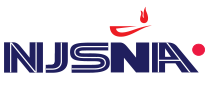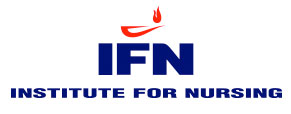Healthy Nurses Don’t Ignore Sleep Apnea
Do you wake up tired? Do you lack vim, vip and vigor? Do you drink several cups of coffee per day, or find yourself at the grocery store looking for products that promise increased energy? What if the reason is not because you’re working too many shifts or “doing too much”, but because you have a disorder that keeps starving you of oxygen during your sleep and puts your entire body through the ringer… every night? Perhaps it’s time to consider whether or not you have Obstructive Sleep Apnea.
Obstructive Sleep Apnea (OSA) is “a disorder in which a person frequently stops breathing during his or her sleep. It results from an obstruction of the upper airway during sleep that occurs because of inadequate motor tone of the tongue and/or airway dilator muscles”. OSA syndrome is usually defined as 5 or more disordered breathing events per hour of sleep along with associated symptoms such as excessive daytime sleepiness, fatigue or impaired cognition. Greater than 15 disordered breathing events during sleep (or an apnea-hypopnea index (AHI) of 15 or greater) does not require consideration of other symptoms for a diagnosis of OSA (Park, Ramar, & Olson, 2011).
It is well known that possible complications of OSA are what make it so very important to evaluate and treat. It increases risk for MI, stroke, hypertension and diabetes. OSA can lead to depressed moods, decreases in neurobehavioral functioning and consequently could lead to increases in errors and accidents. Especially in nursing, the consequences of excessive somnolence on the job could be dire. As Healthy Nurses, we cannot achieve our physical health and fitness goals nor achieve mental balance when we are starved for sleep. We need to recognize the symptoms of OSA in our selves, our patients and our colleagues and ensure proper diagnosis and treatment.
The more obvious symptoms of sleep apnea are disruptive snoring, witnessed apnea or snorts during sleep, gasping or choking during sleep and excessive daytime sleepiness. What is not so obviously attributed to sleep apnea is difficulty with concentration or short-term memory loss, excessive nocturia, restlessness/unrefreshing sleep, decreased libido, irritability and morning headaches.
Some risk factors to consider are: obesity, small upper airway, alcohol intake (exacerbates OSA), being male or a postmenopausal female, and large neck girth may be at elevated risk.
The most common test for OSA is overnight polysomnography (PSG). Otherwise known as the “sleep study”, PSG is often done in a facility, but portable PSG one does at home is currently another option.
Common treatments are weight loss, use of oral appliances, use of a breathing mask connected to a device called a CPAP (Continuous Positive Airway Pressure) or BIPAP (Bi-level Positive Airway Pressure). Other treatments include surgery to resect the soft palate or removal of tonsils and adenoids. A more involved surgical option is an implanted hypoglossal stimulation device that a person can switch on before sleep. It works by stimulating the brain to keep the tongue from occluding the airway. It is important to consider that the chosen treatment may not be successful, so reevaluation is key and any problems with a treatment or equipment must be ironed out. Don’t give up; your health depends on it.
Linda Corigliano, Lisa Ertle, BA, RN, Tracey Jaworski-Lucas, and the Healthy Nurse Healthy New Jersey Team
References:
Geiger-Bronsky, M. & Wilson, D. J. (2008). Respiratory Nursing: A core curriculum. New York: Springer Publishing.
Park J.G, Ramar K, & Olson E.J. (2011). Updates on Definition, Consequences, and Management of Obstructive Sleep Apnea. Mayo Clinic Proceedings, 86(6), 549-555. https://doi.org/10.4065/mcp.2010.0810


